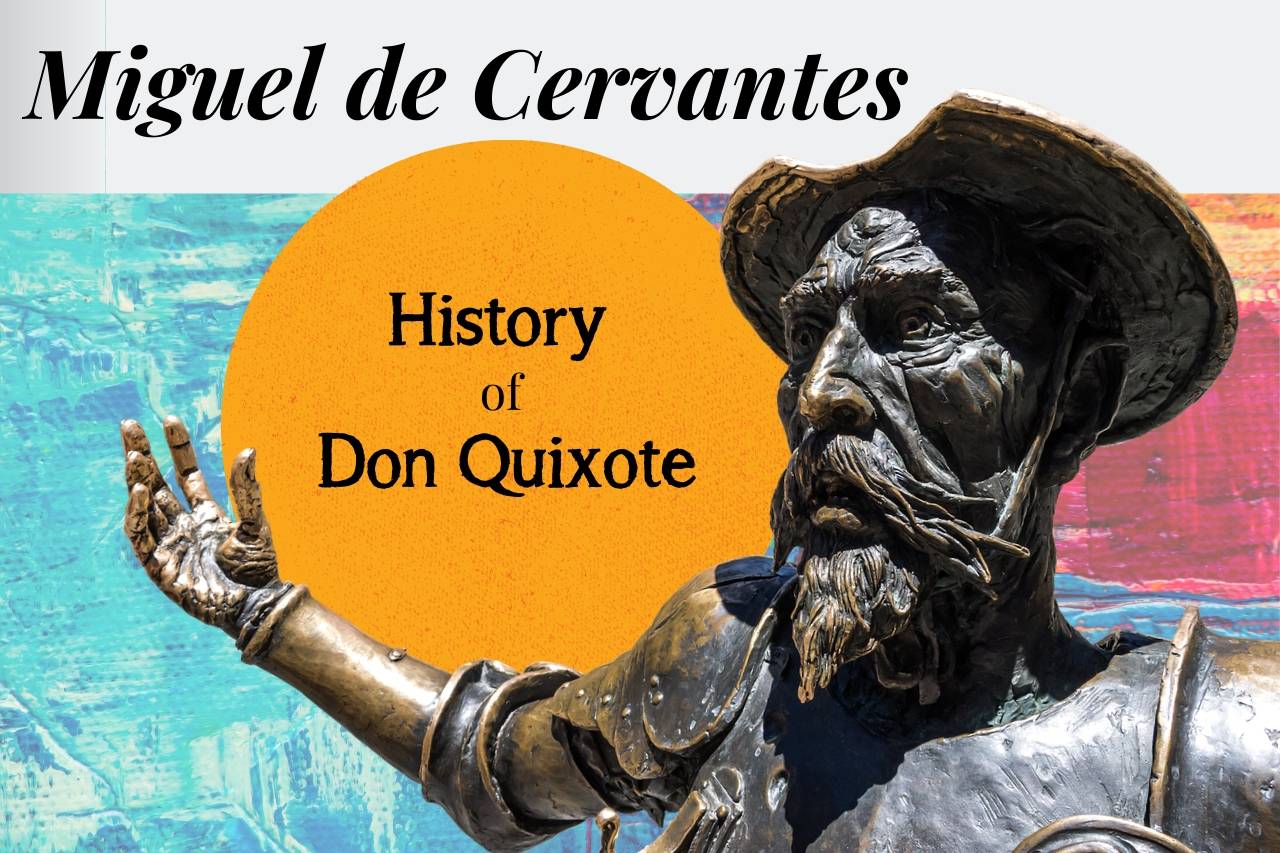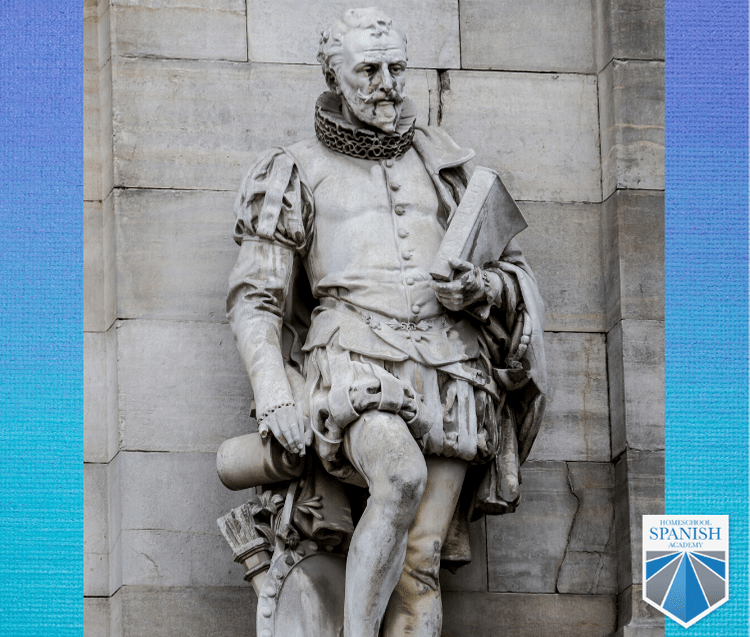
History of ‘Don Quixote’ Author Cervantes and His Buried Remains
Some might say that Miguel de Cervantes was even more interesting than his eternally famous protagonist Don Quixote. The Spanish author lived a life of action and danger: battling as a soldier, surviving as a slave, stealing as a tax collector, and then gaining fame as a writer.
Cervantes was a novelist, playwright, and poet who changed the course of modern literature. Just as he did in life, he continued to provoke intrigue and speculation long after death. In fact, his mysteriously misplaced remains sparked a centuries-long investigation that led to their astonishing retrieval in 2014.
Don Quixote
In 1605, the first modern novel was born, a carefully crafted satire called El ingenioso hidalgo don Quixote de la Mancha, or for short, Don Quixote (pronounced Kee-ho-tay). Cervantes depicts a cruel world full of stoic realism, mockery, and violence. This starkly contrasts with the main character Don Quixote’s childish idealism and determination to fulfill his dream. The comical and yet tragic catch is that Don Quixote isn’t just a man of optimism, but a poor villager in his 40s who loses his mind after reading too many books.
The old man begins to believe that he’s a knight in shining armor, and through moments of lucidity, realizes he needs both a “damsel in distress” and a squire at his side. He wants to follow the routine storyline of the knight’s tales he was so fond of reading. He picks a woman at random to be his muse and petitions the village beggar to be his squire.
What follows is a heroic adventure for Quixote and his squire, Sancho Panza, that appears hysterical and dangerous to onlookers who, at times, are justifiably critical of the duo’s absurdities. They wage “courageous” battles against windmills, a group of monks, and a herd of sheep, among other innocuous things. Some characters in the story are so outraged by Don Quixote’s foolishness that they are driven to beat him relentlessly, leaving lasting injuries.

(Get Edith Grossman’s celebrated and best-selling translation of Don Quixote here to discover the details of Don Quixote’s nonsensical exploits.)
Publishing and Legacy
Shortly after the novel’s publication, it reached epic heights of stardom. Unfortunately for Cervantes, he had sold publishing rights to a publisher-bookseller just a year prior to its appearance on the literary scene. The fact that the author wouldn’t receive a single profit from his crowd-pleasing creation meant that he had to write a Part II, thus spurring his intent to do so (which he published 10 years later).
Parts I and II of Don Quixote continue to garner fame 400 years after publication and have been translated into more than 60 languages. The story has become a defining feature of literature in the western world and has even generated a new word: quixotic, or in Spanish quijotesco.
| quixotic | quijotesco | kee-ho-tesk-oh |
It means “foolishly impractical especially in the pursuit of ideals” and “marked by rash lofty romantic ideas or extravagantly chivalrous action.” Both provide an accurate reflection of Don Quixote’s character.
Discovered Remains
Despite being arguably the most widely-celebrated Spanish author in the history of humanity, Miguel de Cervantes died in financial ruin. He was laid to rest in an unmarked grave at the Convent of the Barefoot Trinitarians in April 1619. When the convent underwent reconstruction in the 17th century, his remains were essentially forgotten for 400 years.
It wasn’t until April 2014 that a group of experts including historians, scientists, and anthropologists joined forces to search for the author’s long-lost tomb. Thanks to modern technology like ground-penetrating radar, infrared cameras, and 3-D scanners, the collective investigation soon paid off. They located underground compartments near the back of the building. Soon after, they began an excavation project which led to the discovery of a wooden casket containing human remains.
The man credited with having conceived the search for Cervantes’ remains is a Spanish historian named Fernando de Prado. Ultimately, he identified the author’s body by two major wounds the man had suffered during life: a bullet wound to the chest and a deformed left hand. After 400 years of obscurity, Cervantes’ resting place could now be properly commemorated.
Best Cervantes Quotes
Miguel de Cervantes once said that “a proverb is a short sentence based on long experience.” For that reason, we can find great value in his words of wisdom. Luckily, Cervantes regales us with an exceptional collection of inspiring and quirky quotes. Some of them will have you nodding your head in agreement, while others may seem a bit too idealistic… or should I say, quixotic. Let’s jump head-first into Cervantes’ brain!
On writing
“The pen is the language of the soul; as the concepts that in it are generated, such will be its writings.”
On self-awareness
“In every case, the remedy is to take action. Get clear about exactly what it is that you need to learn and exactly what you need to do to learn it. BEING CLEAR KILLS FEAR. Make it thy business to know thyself, which is the most difficult lesson in the world.”
On perception
“Too much sanity may be madness and the maddest of all, to see life as it is and not as it should be.”
On people
“The wicked are always ungrateful.”
On literature
“Move the melancholy to laughter, increase the joy of the cheerful, not irritate the simple, fill the clever with admiration for its invention, not give the serious reason to scorn it, and allow the prudent to praise it.”

Know Thyself
One of the most powerful quotes from those above is “Get clear about exactly what it is that you need to learn and exactly what you need to do to learn it.”
If you’re clear that you’d like to learn Spanish, then you’re in the right place. At Homeschool Spanish Academy, we offer online Spanish classes with certified professionals who are native Spanish speakers. Our teachers are eager to meet you! Take a free trial class to see how fun, and efficient it is for you to become fluent in Spanish.
Want to learn more about Spanish and Latin American history? Check out these posts!
- Celebrating Culture and Joy: The Magic of Carnival in Spanish-Speaking Countries
- 15 Mouth-Watering National Dishes of Latin America
- Discovering The Mayan Languages
- The 10 Most Common Spanish Surnames in The U.S
- Everything About Mexican Christmas Traditions
- What Is the Hispanic Scholarship Fund? Is It Legit?
- A Spanish Guide to Thanksgiving Food Vocabulary
- How Did All Saints Day Celebrations Started?
- Top-Rated Accredited Online Spanish Classes for Kids - February 22, 2023
- 6 Compelling Reasons Why Your School Should Outsource Spanish Class - February 3, 2023
- 20 Free Spanish Books, Novels, and Stories in PDF and Printables - January 25, 2023





Sorry, you really don’t know that Cervantes did not write the Don Quixote, he was just a figurehead, un testaferro. The title of the book was: “The history of the valorous and wittie Knight-Errant Don -Quixote of the Mancha” published in 1612, later than the translation into Spanish but that was the deal..
Hi J! There are many theories that usually revolve around Cervantes. Some people say he was a figurehead, others say he narrated the story instead of writing it. They actually have similar speculations about Shakespeare, too. The general aspects of history I describe here are the ones that are agreed upon by most people who debate this subject, which is that Cervantes wrote the novels himself.